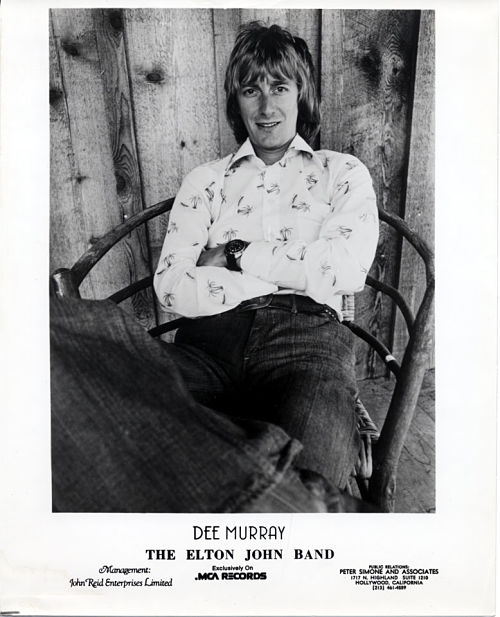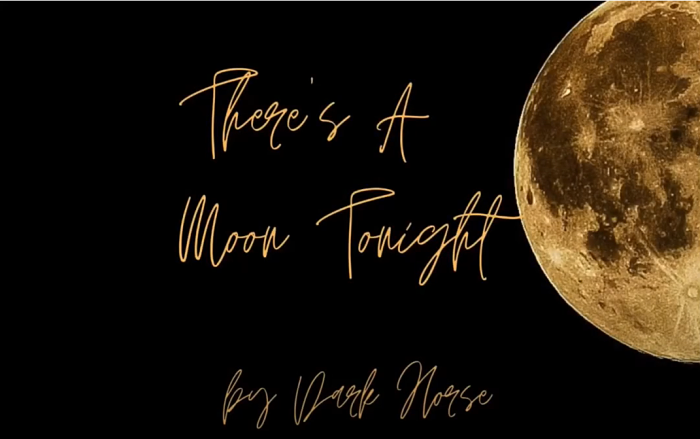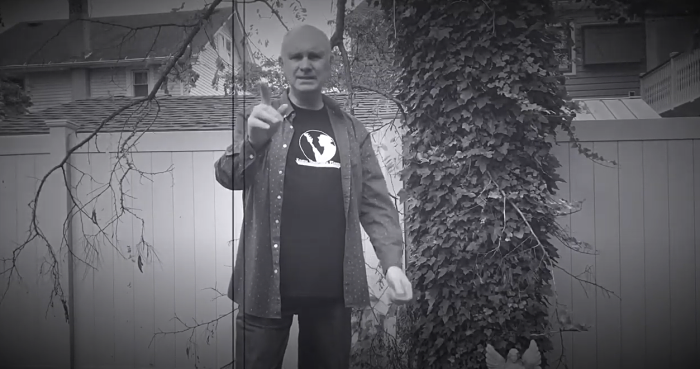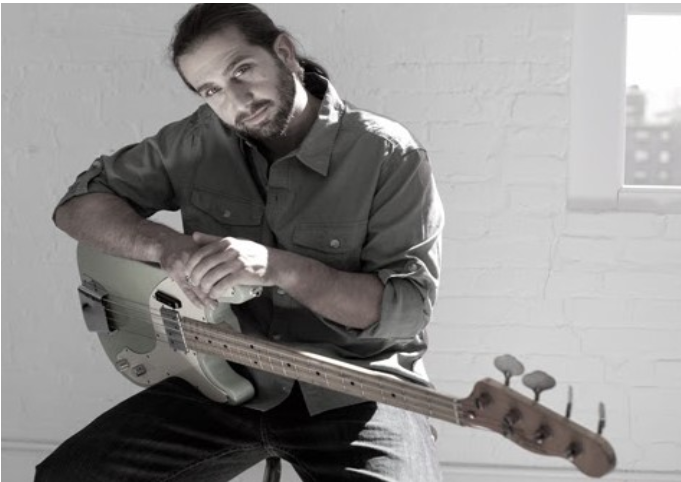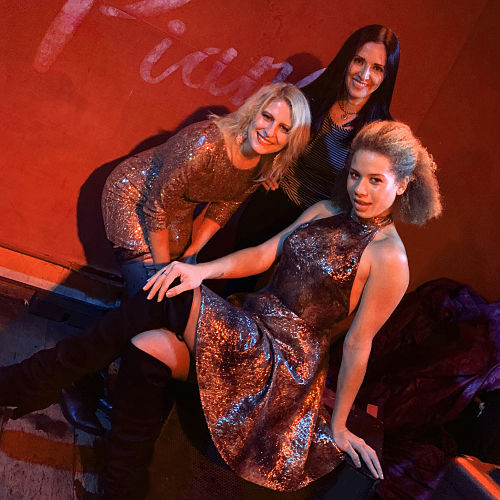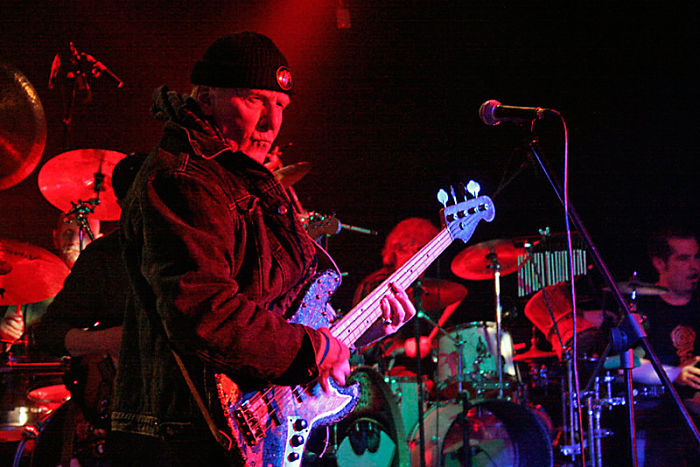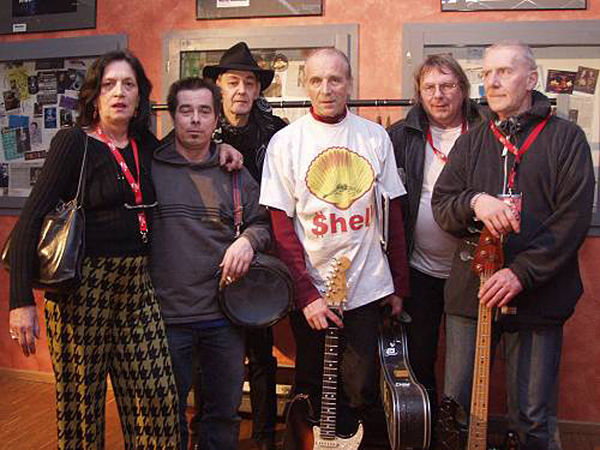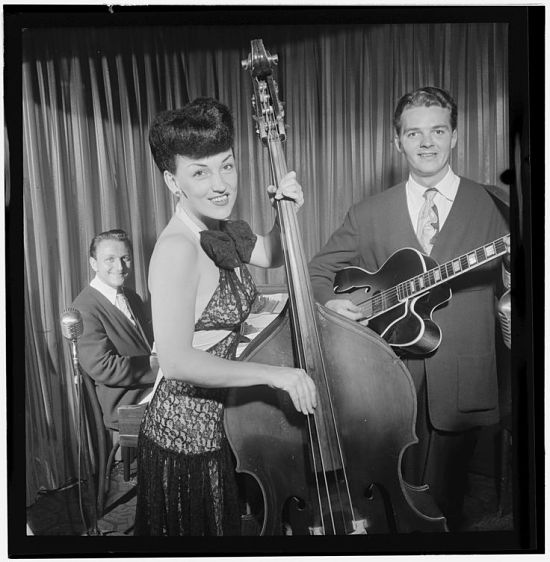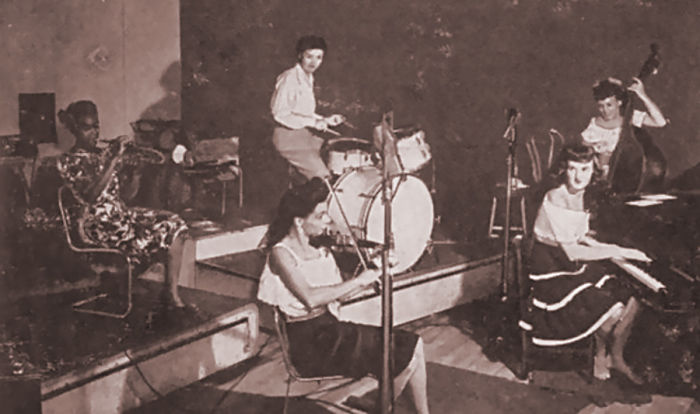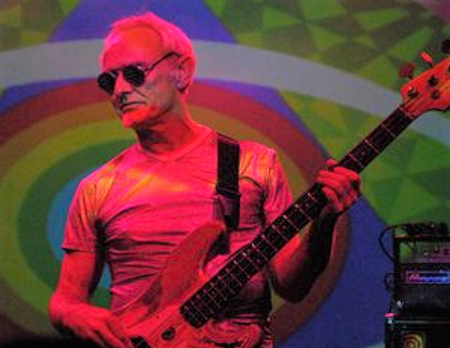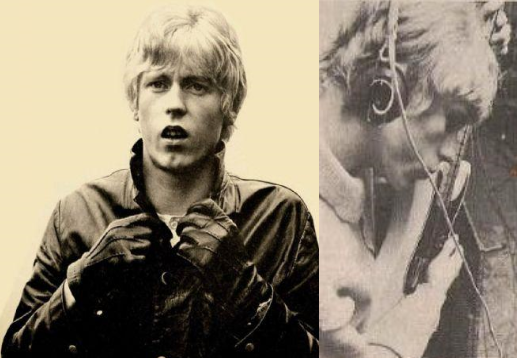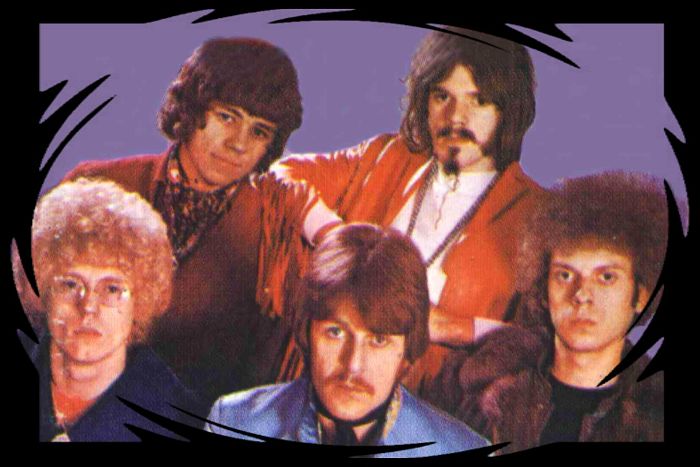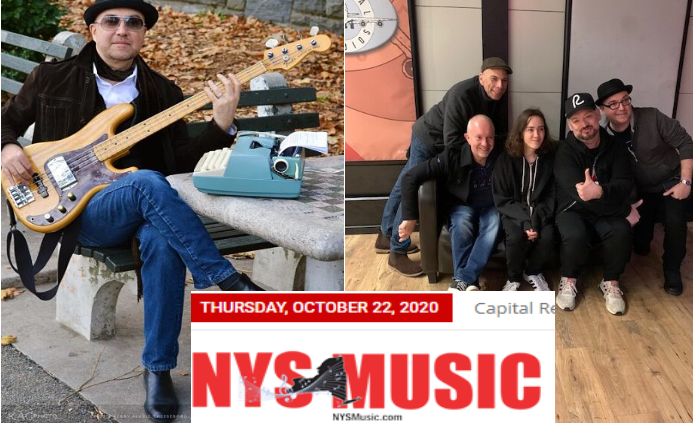
By Sal Cataldi – This feature appeared in NYS MUSIC COM on 22 October 2020 https://bit.ly/3dMI0oi
How many bass players does it take to change a lightbulb? None, the pianist can do it with his left hand!
It’s an old musician’s joke demonstrating how little respect some give the men and increasingly women who wield the bass – that indispensable instrument which lays the foundation without which any tune would, let’s face it, sound rather wimpy.
Since 2013, bass playing NYC journalist Tom Semioli, has been out to change this with Know Your Bass Player (KYBP), a blog of entries profiling the bass greats of rock, jazz, blues, funk and country’s classic eras. In 2014, Mark Preston joined the bass fray as producer and director of a video companion Know Your Bass Player on Film, a video channel with serious production values.
http://knowyourbassplayer.com/kypb-on-video/
To date, approximately 650 players world renowned to little known but deserving have been profiled in KYBP’s online features. Know Your Bass Player on Film captures the stories of about 50 players in over 180 video episodes, shot on location in NYC and London, and now, like everything in COVID era, via Zoom and Skype. The video vignettes reveal behind-the-scenes, fly-on-the-wall stories of Bob Dylan, John Lennon, The Pogues, Ronnie Lane, Keith Richards, Ian Hunter, Paul Simon, Boy George, Roxy Music, George Harrison, The Zombies, The Kinks, Les Paul, Joe Jackson, David Bowie and Freddie Mercury, to name a few, by the bassists who were in the studio and on stage with these iconic artists for some of their greatest triumphs…and missteps!
Semioli’s deep well of talent as a writer and player, and his humor, are at the heart of KYBP’s content. He approaches each player’s work and life with both a refined knowledge of the artform and a nose for the kind of humorous anecdotes that make for great reading and viewing, whether you sling the bass or not.
Semioli’s creds are impressive. While earning a degree in communications at the University of Miami, he minored in jazz, at the institution that gave us Jaco Pastorius and Pat Metheny. Upon moving to NYC, he continued in private study with jazzer Ron McClure of Charles and Blood Sweat & Tears fame. Semioli quips that he did his “post-graduate work” during gigs at NYC institutions like CBGB and The Bitter End, all while holding down a series of impressive day jobs in journalism and media.
So just what is the life of a bass player all about? We think these words below from Semioli and KYBP’s “About Page” provide some pretty good insight:
“We are the ones who serve the singer, the song, and the soloist. Though we do not possess the harmonic nor sonic range of a guitar, keyboards, horns and other wind instruments, nor the dynamics of drums –it is us who determine how a chord actually sounds – which, in essence – often determines whether or not you’ll like the artist, or the track. We are the only individuals on the bandstand and in the recording studio with that critical responsibility… To be a bass player is to exude skill, confidence, humility, patience, tolerance, and knowledge: very few are chosen, and fewer still are called!
So, who are these important players, and why should you know who they are?
Sal Cataldi: First off, when did you get into music?
Tom Semioli: I vaguely remember The Beatles on The Ed Sullivan Show at age 4 or 5. At the New York World’s Fair, my mom took me to the British pavilion to witness Beatlemania by proxy at a screening of their movie, Help. Girls were screaming and I thought ‘this is interesting!’
I was a working musician through most of the 80s, then I moved to California to start a studio business in the early 90s. Somehow, through a simple twist of fate, I became a music journalist, then a music publicist…then I went into the television production field as a writer in the 2000s, when Napster flattened the record business. I’m like a cockroach with four strings!
SC: How did Know Your Bass Player dot Com come into existence?
TS: I’m sitting at my desk, working for a very successful television news video production company sometime in the early 2010s. My colleague at the time was among the most influential publicists in the industry. He has a pal who works for a major concert promotions company and they’re discussing Paul McCartney, who is in town to do a show. He asks me, ‘was Paul McCartney the bass player in The Beatles?” My jaw drops! How does he not know that? Well, he’s a few years younger than me, so I forgive him.
That same evening I’m watching the great British music television show Later….with Jools Holland with my wife, who was an upright bass player in high school. Sting is the guest. My wife is a huge fan. She turns to me and whispers ‘Sting has a guitar that looks like yours, is he a bass player?’ Ye gods, again, I am in disbelief. The former Gordon Sumner is likely the most famous bassist in the world.
Next morning, I’m in the dentist chair. She is wearing a Bruce Springsteen t-shirt beneath her open white medical smock – as she just attended her umpteenth show. I stop her in mid-sentence during her Bruce hosannas and inquire “who plays bass in the E Street Band?” She replies ‘bass? Bass fiddle? There’s no bass in the E Street Band.” I point to Bruce’s bassist on her t-shirt Gary W. Tallent. Now I have a mission in life.
The next morning, I begin posting Know Your Bass Player missives on Facebook. I start off with Tallent, then Danny Klein from the J. Geils Band, Dee Murray from Elton John, Phil Chen from Jeff Beck. Slowly, I start to gather simpatico followers. After a year or so, I start to archive all the content on a website – thus was born Know Your Bass Player dot Com!
SC: What is behind the growth and aesthetic of Know Your Bass Player?
TS: Well, here’s the secret. This website and video series relates to my generation of bass players. We’re talking the golden age of the album era and FM radio from the late 60s to the 90s. A magic time. My demo is the oft neglected 55 and upwards group. The rocking AARP motley. Stretch jeans, loose shirt to hide the pot belly. Chain wallets so we don’t forget where our money is. Hats covering bald spots. We play gigs with our friends who are still alive in the fringe clubs. The kids are out of the house and married, so now we rock again. Scotch on the rocks and Viagra. And a nap. Very important! The mainstream has no idea we exist!
The whole Know Your Bass Player concept explodes – it’s like the gay liberation movement on steroids! All these bass players start coming out of the bass closet – “you like Carl Radle!” – who was Eric Clapton’s bassist. “I love Carl Radle too!” We hug, we bond, we shed tears over the bassline in “Bell Bottom Blues.” Nobody gets this stuff but us! Finally we are family! Guys start wearing the Know Your Bass Player t-shirt in public. They come out to their wives, their children, their co-workers! It’s a movement!
SC: How did Know Your Bass Player evolve into a corresponding video series?
TS: Right about the time I started the Know Your Bass Player website, I reconnected with an old friend – Mark Preston. In addition to being a successful real estate broker, Mark is also an accomplished singer and songwriter. He’s old school, traditional country.
So I meet up with Mark at one of his gigs. He invites me to travel with him to London to see the Mott The Hoople reunion of 2013. Mott is my all-time favorite band, so of course I’m there. At the time, the band’s bassist, the legendary late, great Overend Watts had just written a book on his long distance hiking experiences. Watts was among rock’s most elusive characters. But I talk with Mott’s publicist and offer to render a review for Huffington Post books. They were duly convinced. Mark and I get the VIP treatment, we’re with the band before the show, chatting with Watts, Ian Hunter, Verden Allen, Mick Ralphs, and having a grand time.
Backstage at the O2 after the gig, we’re among legends such as Jimmy Page, the guys in UFO, Queen, Joe Elliott of Def Leppard – all huge Mott fans in attendance to witness glam rock history. The scene is surreal – the old dudes in leather with their young and not so young wives. Mark says to me ‘hey we oughta film this for Know Your Bass Player!”
Enter cinematographer, producer, production company owner Derek Hanlon – a close friend of Mark who has an extensive rock and roll history and was with us at the Mott gig. He’s filmed everyone from Jethro Tull to Motorhead to Madonna – to cite a very, very select few. Derek was headquartered SoHo, London during the 70s, 80s working with record labels, the BBC. Derek has more rock and roll stories… we should be doing a documentary on him!
Our first inclination was to do a documentary. However, Mark and I were so impressed with all the stories, we felt that I would be a shame to edit out anything, so it became a film series of shorts, something akin to Comedians In Cars Getting Coffee.
We schedule three bassists just for a test run in London. Our first filmed interview was Steve Bingham, who was the bassist with Ronnie Lane’s Slim Chance and had a gig at the Half Moon in Putney with a reformed version of the band. Jim Rodford, who played with Argent, The Kinks and at the time was in the latest version of his cousin’s band, you may know them as the Rock and Roll Hall of Fame ensemble The Zombies. And studio ace Mo Foster who waxed sides with everyone from Phil Collins and Jeff Beck.
Then we continued in New York City over the next few years. Our taped interviews in New York include Sal Maida of Roxy Music, Gary Van Scyoc with John Lennon and Elephant’s Memory, Cait O’Riordan with The Pogues, Graham Maby with Joe Jackson, Rob Stoner with Bob Dylan’s Rolling Thunder, Brian Stanley with Garland Jeffreys, Paul Page with Ian Hunter’s Rant Band, Joe Vasta with Mink DeVille and Joan Jett, my former bass teacher Ron McClure with Blood Sweat & Tears, my former classmate Paul Nowinski with Keith Richards, Les Paul and Rickie Lee Jones; John Ford of The Strawbs, Hannah Moorhead of The Giraffes, Mike Visceglia with Suzanne Vega, Tony Senatore with Genya Ravan, Ernie Brooks with the Modern Lovers, David Goldflies with the Allman Brothers Band. And we also filmed local players, guys who do the Broadway Shows – we want to represent everyone..
We went back to London last year and it was even more remarkable. Mark chatted with Chris White about The Zombies’ Odessy & Oracle. Our other guests included Phil Spalding and Mickey Feat – two studio players who are in your record collection! Alan Mair of The Beatstalkers, Graham Gouldman of 10CC, Kevan Frost with Boy George, we shot Steve Bingham again, this time with Geno Washington, John Bentley of Squeeze. We also had an all-star cast who could not make it due to scheduling difficulties.
SC: As the site has grown, you’ve gathered more collaborators. Can you tell us some brief stuff about your team?
TS: Our most important collaborator is also a bass player – Mark Polott whom we interviewed on film as he anchored the legendary prog-metal band Haystacks Balboa, an Atlantic Recording act that toured with Rod Stewart and The Faces and Jethro Tull. He created the look of the revamped website and also edited Season Deux and Season Tres of Know Your Bass Player on Film. Our first season was too DIY looking, as we had to get something out to protect our name. Mark’s graphics afford Know Your Bass Player a unique look.
We have a “Chicago Bureau” helmed by another veteran bass player – Joe Gagliardo, who also wrote for Goldmine. His contributions are enormous. Chicago has such a rich, untold history in rock and roll. These Chicago stories would be lost to the ages if not for a guy like Joe who is as passionate about the instrument as he is about the legacy of his hometown.
Our Adjunct Professor is Tony Senatore. A great bassist, composer, recording artist Tony contributes editorials, and helps us with story angles when we film in New York City. Whenever a “bass controversy” arises, we turn to “Senny.” Think of Robert Duvall’s character of Tom Hagen in The Godfather. Bassist Robert Jenkins writes for our “Austin Bureau.” Like Joe, Rob shines a light on players who are in the trenches, making great sounds in one of the world’s greatest musical cities. We also have contributions from bassists Joe Iaquinto, Graham Maby, Chris Semal, and Jeff Ganz, among others.
SC: What are some of your favorites in terms of the video interviews?
TS: Truth be told, everyone reveals gems in their personal stories. But if I had to pick one interview segment – Paul Page’s “All American Alien Boy” is ‘the greatest bass story ever told.” And Paul Nowinski’s “The Dead Conga Player” is a close second.
SC: Who are the dream video interviews you have yet to capture?
TS: Bruce Thomas of Elvis Costello and The Attractions, Norman Watt-Roy with Ian Dury and Wiko Johnson, Herbie Flowers, and Andrew Bodnar of Graham Parker and the Rumour – all of whom have committed to appearing on camera – we just have to work out scheduling.
SC: What are the attributes that you think make for a great bass player?
TS: Humility! Confidence! Gallows humor! An appreciation of the absurd!
SC: Our site is focused on New York and New York musicians. Who do you think are some of the must-see players on the local scene?
TS: My must-see artists include Lorraine Leckie and Her Demons, The Dive Bar Romeos with Joey Kelly and Jimmy McElligott, Edward Rogers, Urban Blue, Tom Clark at the Treehouse 2A, Anne Husick’s various projects, and Emily Duff. In New York City you can plug into any scene and discover unique artists. That includes the artists I play with, Kathena Bryant and Tim Champion who work under the moniker The Hippy Nuts, along with my pals Stu Richards and Dan Reich as Tex Wagner. And this wild jazz-rock improv trio, Spaghetti Eastern 3. In Manhattan, I’ll drop into the Bowery Electric, the Village Vanguard, The Bitter End, 11th Street Bar after hours and stumble into something remarkable!
SC: What are your future plans for KYBP?
TS: As for the film series, given COVID-19 we are starting to do Zoom and Skype chats. We did a fine interview with Donnie Nossov whom you know with John Waite, Pat Benatar, Cher, Lita Ford, and Tom Verlaine which also featured legendary Creem writer James Spina. I just wrapped up a Zoom chat with Paul Gray of Eddie & The Hot Rods, UFO, The Damned, and Professor and the Madman. We’re never going to stop. You can’t get rid of us.
As for the website, I would like it to be more collaborative. The site is designed to be a quick, digital media read, with the exception of Joe Gagliardo who does long form as he interviews the players. But I’d like musicians, fans, bassists, journalists, and industry folks – producers, camera men, engineers, publicists – to contribute anecdotes, pictures, reflections.
We have an egalitarian approach – we respect all genres of music. From Rock and Roll Hall of Famers to bar band denizens.

